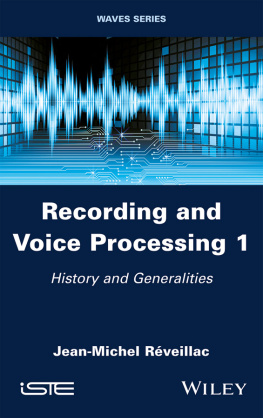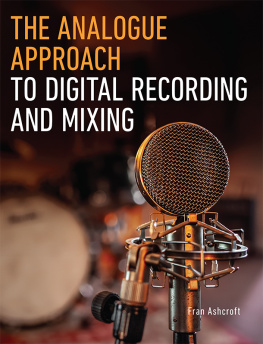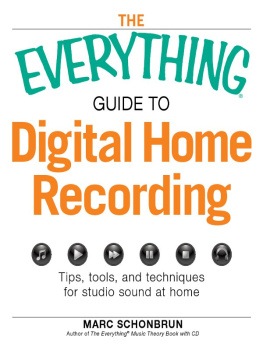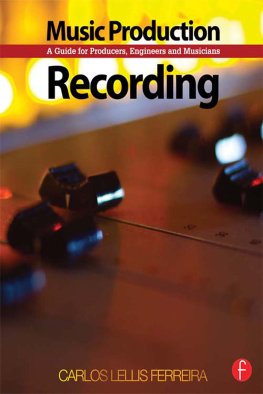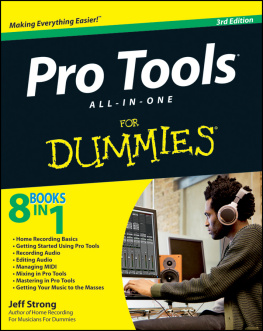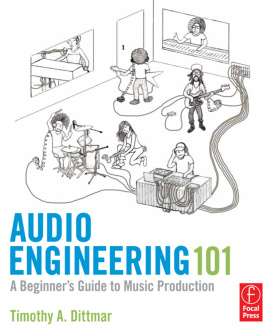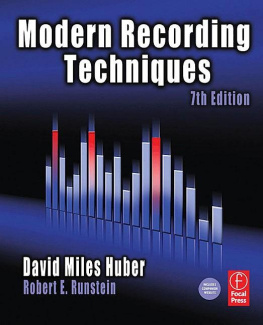First published 2021 in Great Britain and the United States by ISTE Ltd and John Wiley & Sons, Inc.
Apart from any fair dealing for the purposes of research or private study, or criticism or review, as permitted under the Copyright, Designs and Patents Act 1988, this publication may only be reproduced, stored or transmitted, in any form or by any means, with the prior permission in writing of the publishers, or in the case of reprographic reproduction in accordance with the terms and licenses issued by the CLA. Enquiries concerning reproduction outside these terms should be sent to the publishers at the undermentioned address:
John Wiley & Sons, Inc.
111 River Street
Hoboken, NJ 07030
USA
www.wiley.com
Preface
If you want to know if this book is for you, how it is constructed and organized, what it contains and what conventions will be used, youve come to the right place, this is the place to start.
Target audience
This book is intended for all those who, amateur or professional, are interested in sound recording, recording and mixing in the field of singing and voice or musicians, performers, commentators and composers.
The work presented in some sections requires minimum knowledge in the field of acoustics and digital audio.
You must have a good knowledge of your computers operating system (paths, folders and directories, files, names, extensions, copying, moving, etc.) and know how to handle a DAW (Digital Audio Workstation), such as Avid Pro Tools, Apple Logic Pro X, Ableton Live, Steinberg Cubase, FL Studio, MOTU Digital performer, Cockos Reaper, etc., or a digital integrated studio, such as Tascam DP-03SD, Tascam DP32, Roland VS-1680, Akai DPS16HD, Yamaha AW4416, etc.
Structure and contents of the book
This work is composed of two volumes:
- 1) history and generalities;
- 2) studio work.
Volume 1 presents a preface, specifying the contents and the writing conventions used, then an introduction followed by four chapters, a conclusion and five appendices:
- recording history;
- voice;
- microphones;
- acoustic environment.
The conclusion summarizes the main topics discussed and introduces the concepts that will be addressed in the second volume.
Appendices 15 provide some additional information. You will find in this order:
- sound unit;
- audio connectivity;
- audio processing plugins;
- tube and JFET mic amplifiers;
- microphone pairs.
Volume 2 presents a preface and an introduction identical to those of Volume 1 followed by four chapters, a conclusion and five appendices:
- processing hardware and software;
- configuration and audio channel;
- voice recording;
- special effects.
Appendices 14 are taken from Volume 1 to complement the previous chapters by including:
- sound unit;
- audio connectivity;
- audio processing plugins;
- microphone pairs.
of Volume 2 provides details on the types of software plugins available from different vendors and operating systems.
The conclusion sheds light on the whole book and gives a brief overview of the future evolution of voice recording.
Each volume can be read separately. While there are concepts that are dependent on another chapter, references to the relevant sections are given. However, the first two chapters of Volume 1, devoted to the history of recording and to the human voice, provide a contextual basis for the understanding of several notions that you will find in the following chapters.
If youre a novice on the subject, I strongly advise you to read them first, to discover the basics of the subject of this book.
For the others, I hope that you will discover new notions that will enrich your knowledge.
At the end of each volume, you will find a reference list and a list of Internet links.
A glossary is also present; it will explain some acronyms and terminologies very specific to sound recording, recording and mixing.
Conventions
This book uses the following typographical conventions:
Italics, which are reserved for important terms used for the first time in the text which may be present in the glossary at the end of the book, mathematical terms, comments, equations, expressions or variables.
Remarks are indicated by the presence of the keyword: NOTE. They complete the explanations already provided.
The figures and tables all have a legend that is often useful for understanding.
Vocabulary and definition
As with all techniques, voice recording has its own vocabulary. Certain words, acronyms, abbreviations, initialisms and proper names are not always familiar and will be included in the glossary.
Acknowledgments
I would especially like to thank the ISTE Ltd team and my editor Chantal Mnasc, who trusted me.
Finally, I would like to thank my wife, Vanna, and my daughters Ocane and La who supported me throughout the writing of this book.
August 2021
Introduction
Since Plato and Aristotle, we have often heard this quote, The voice is the mirror of the soul. It is true that before understanding the meaning of a word, we must understand its emotional side; we recognize the intonation that makes a voice more or less unique. The paralinguistic characteristics of a voice, that personalize it, take priority over the meaning of the message that is delivered. They express the emotional aspect of the interlocutor and favor the transmission of emotions.
It is also necessary to take the environment into consideration; the voice exists only through its medium, the air which surrounds us. The numerous acoustic variables, vocal cords and different morpho-anatomical cavities of the individual form the timbre of the voice, which can be modified during its diffusion by the environmental medium in which it is established.
Each individual has a different timbre that represents a sound signature. The voice is the reflection of the body and the spirit, but let us not assume that its characteristics are as static and reliable as the genetic code or fingerprints. They are variable, determined by numerous parameters linked to morphology, imagination, environment, affect and even gestures, even if many of these elements do not affect the hard core that builds the essence of a voice.
The recorded voice brings different sensations that often flout the canons of the direct voice, spoken or sung, but it is far from being unpleasant and it has become, by force of things, a standard. Our world is constantly saturated with music or recorded voices; few people can claim to have heard a particular performer with his or her live voice. Voices are optimized for recording and broadcasting; they must remain intelligible and are sometimes enriched, or even placed in a virtual environment, but our ears have become accustomed.

